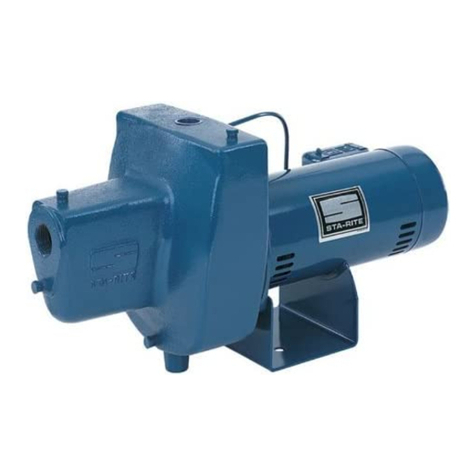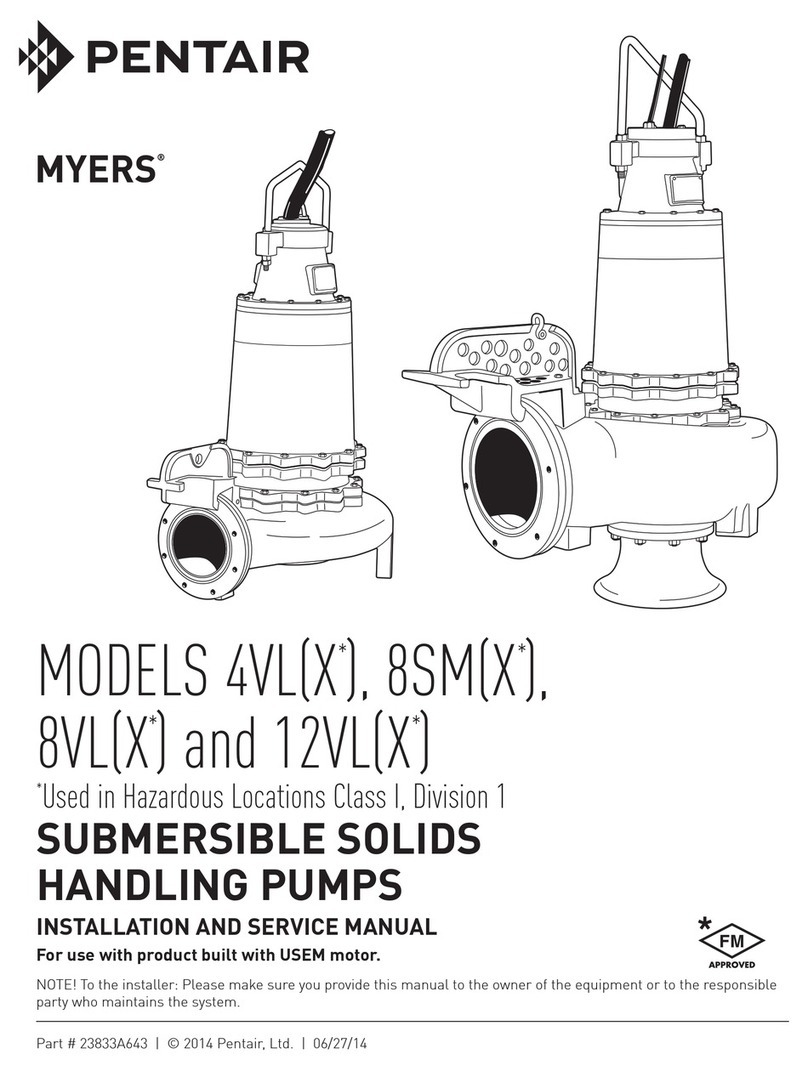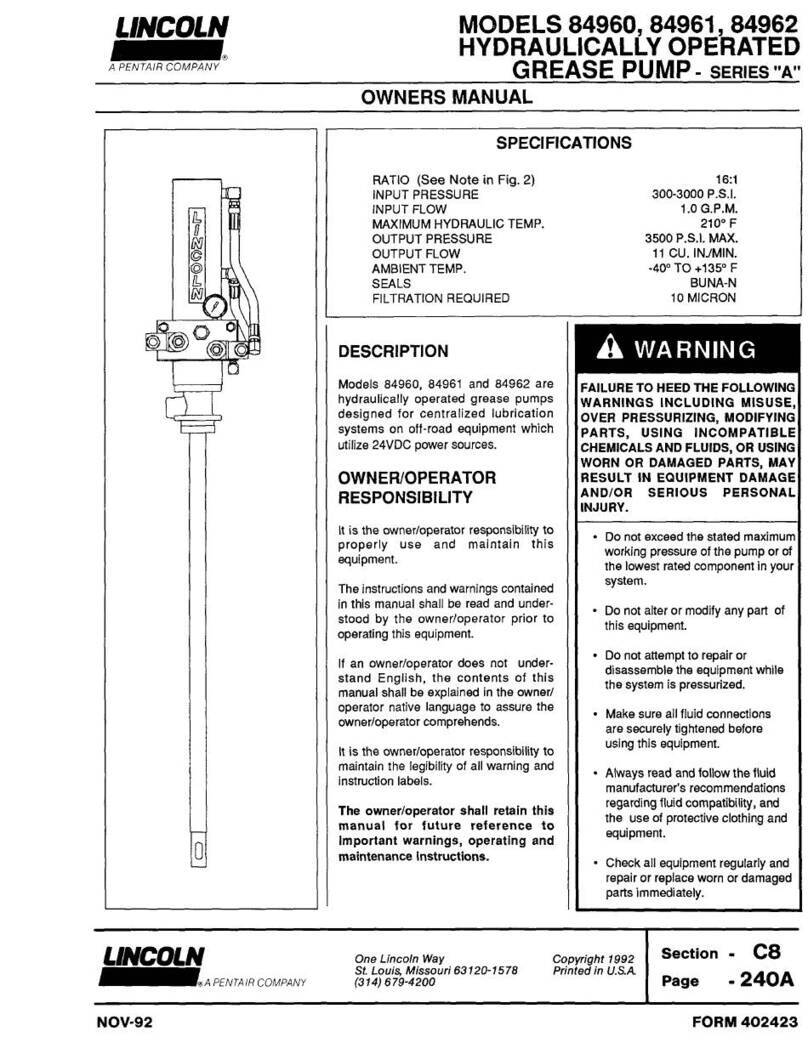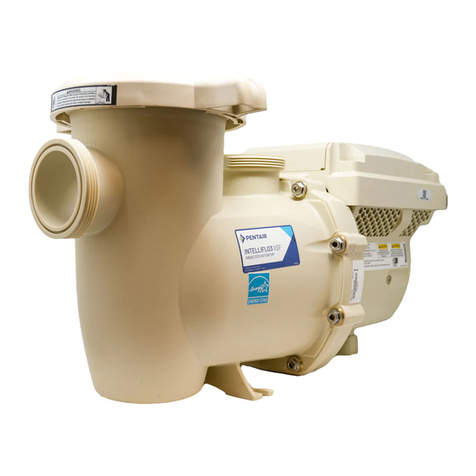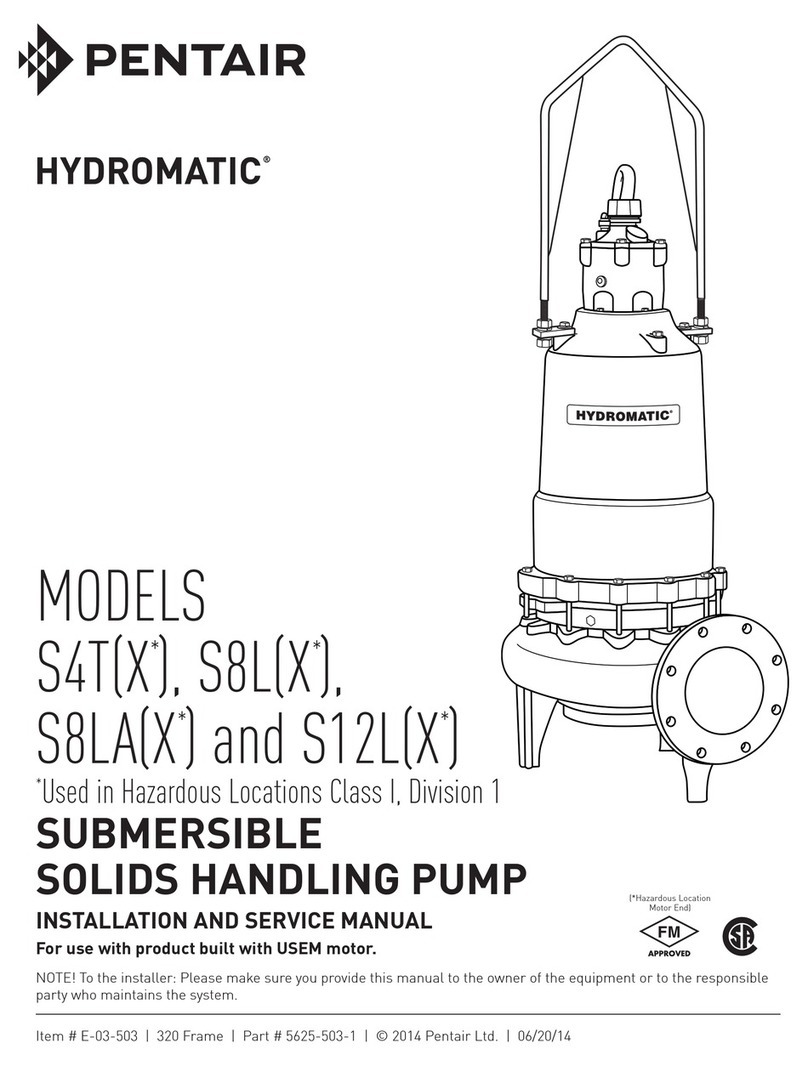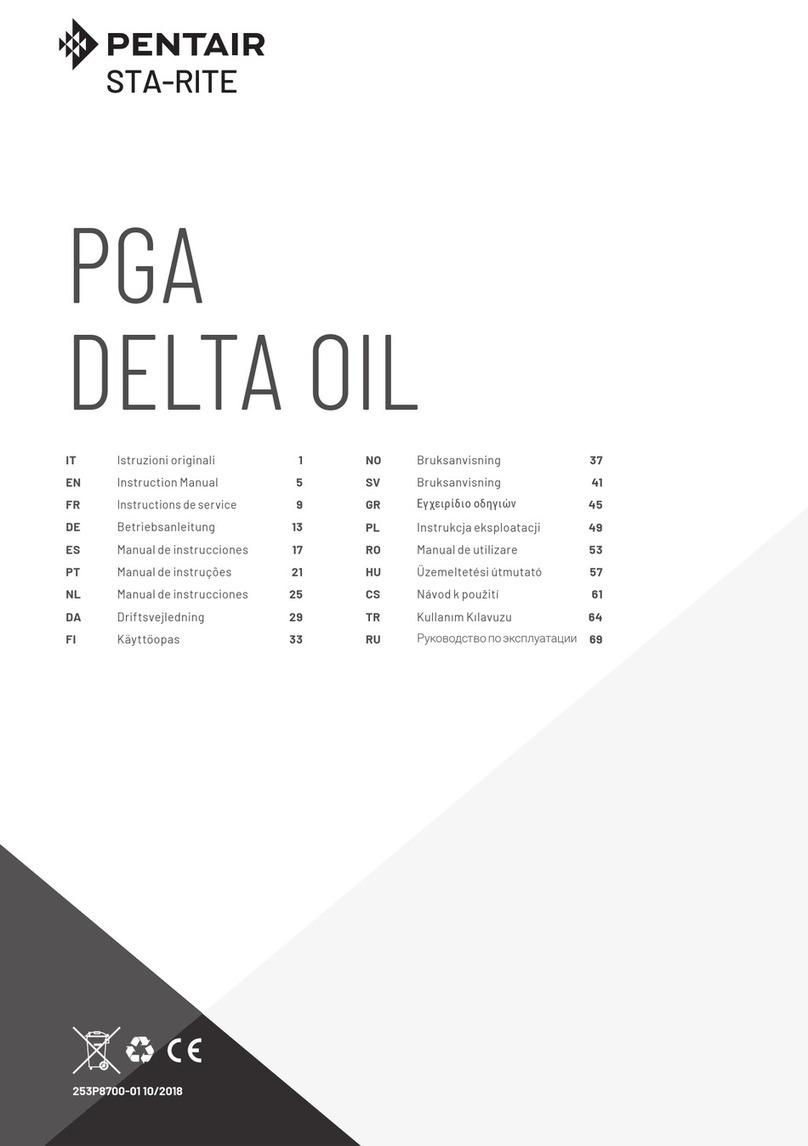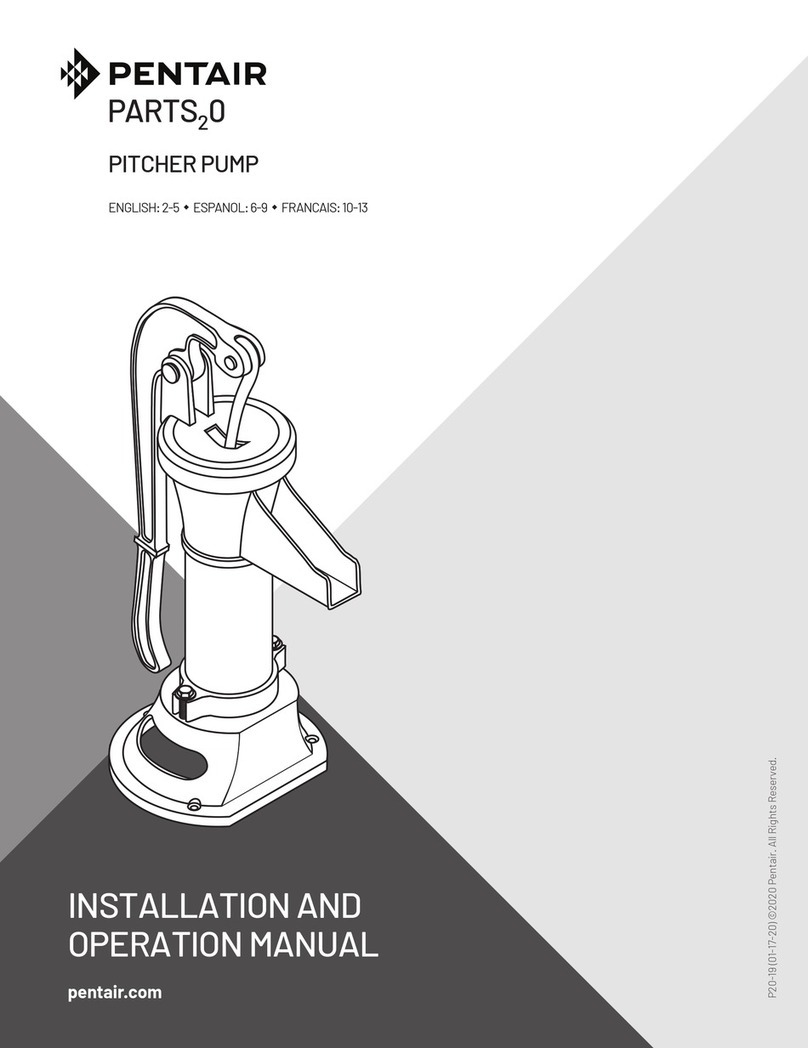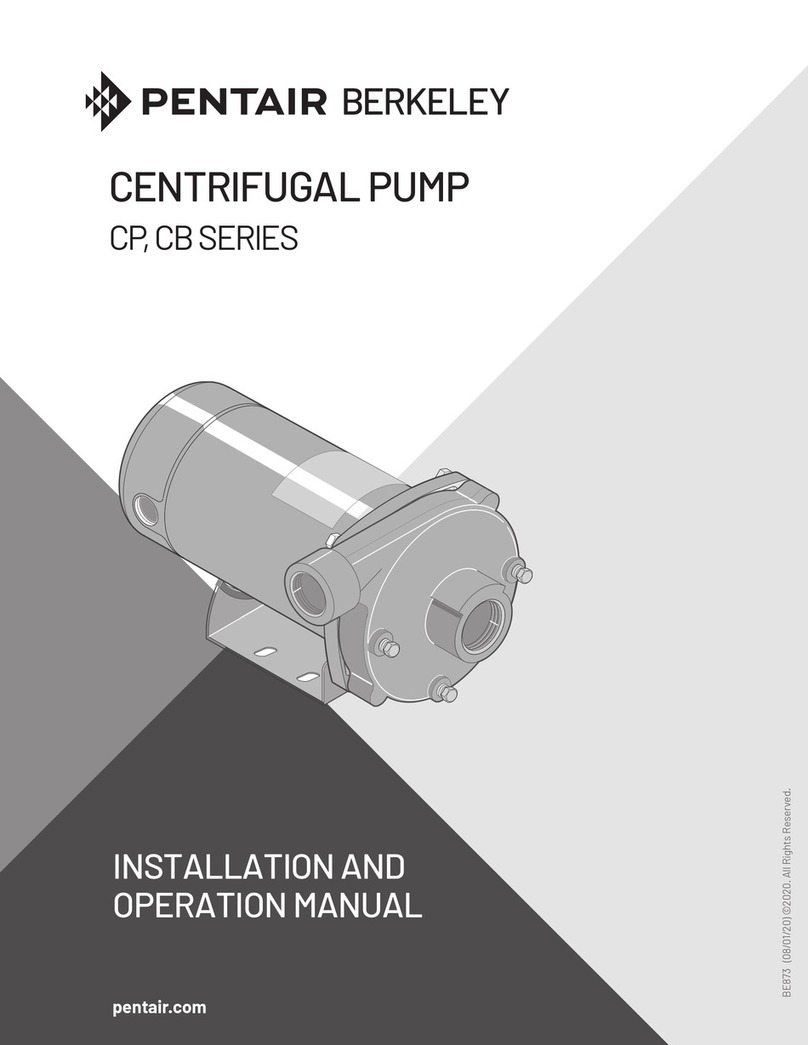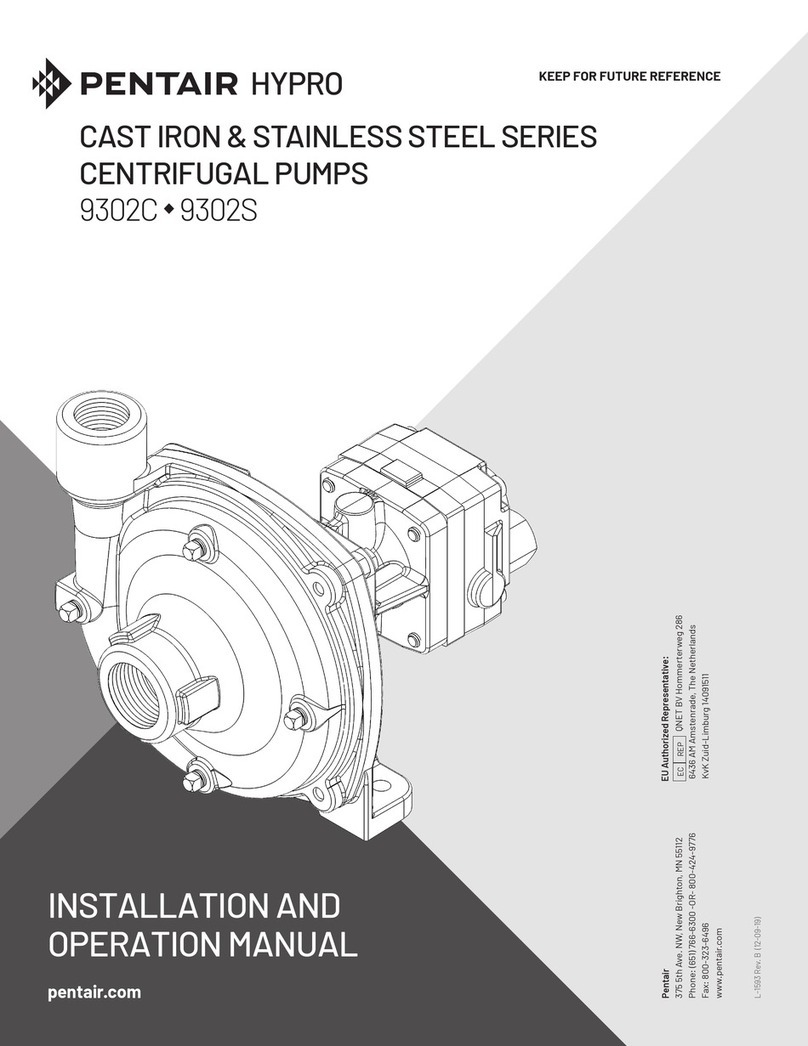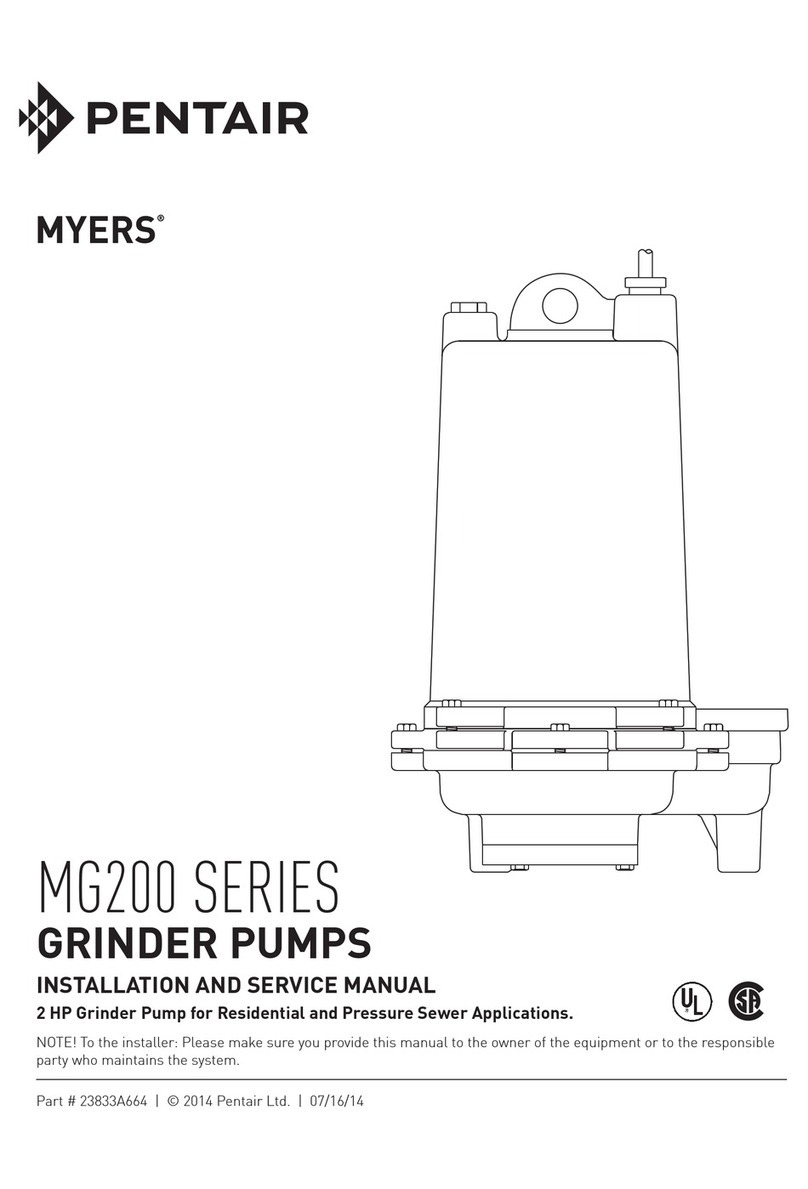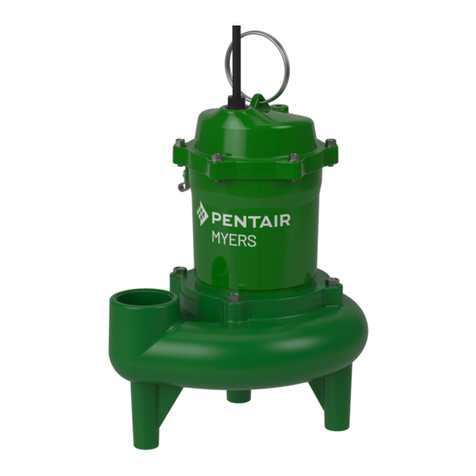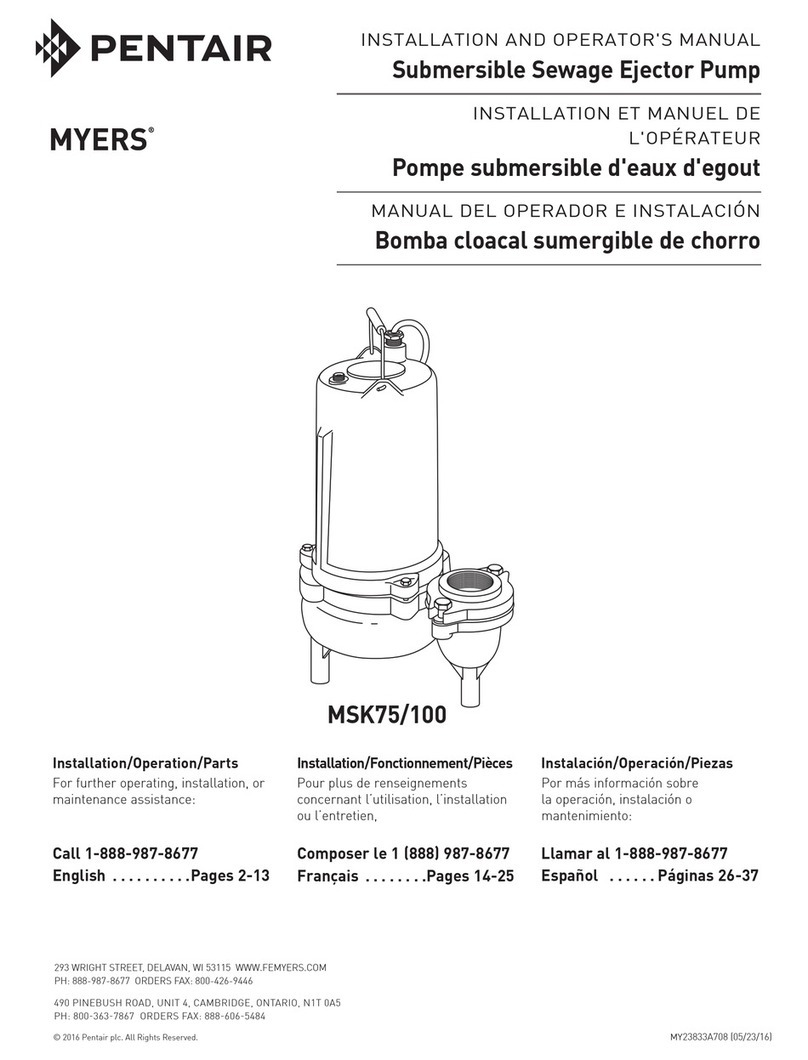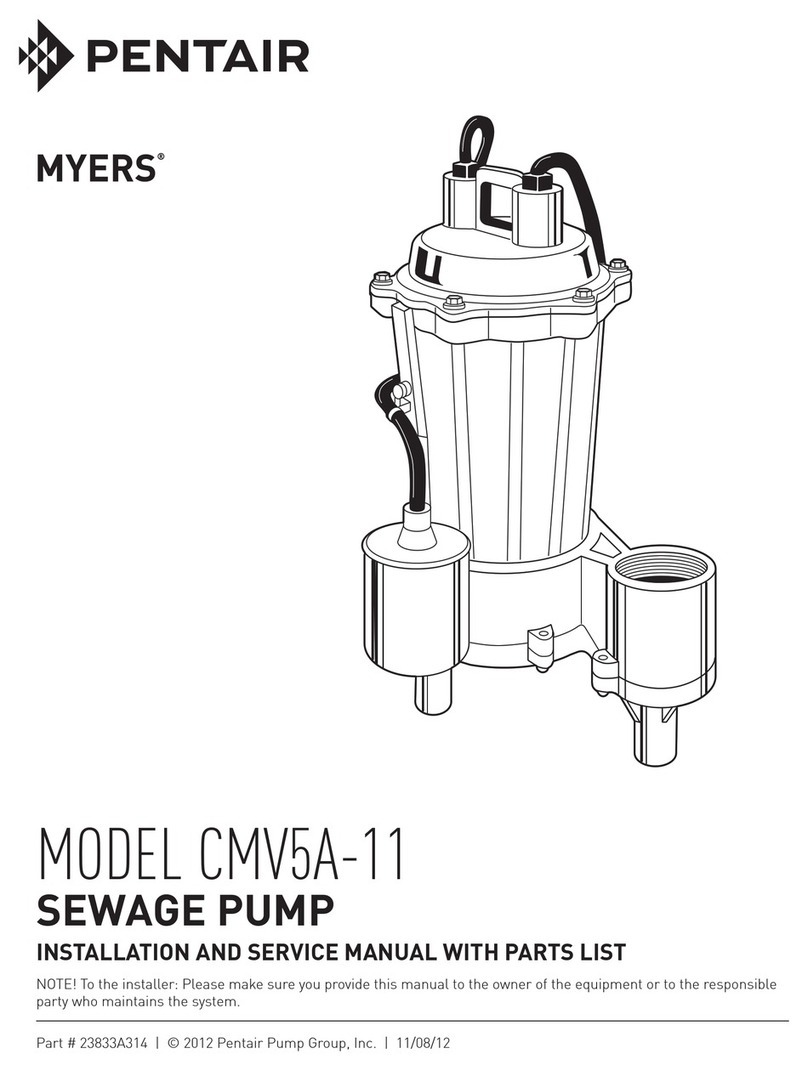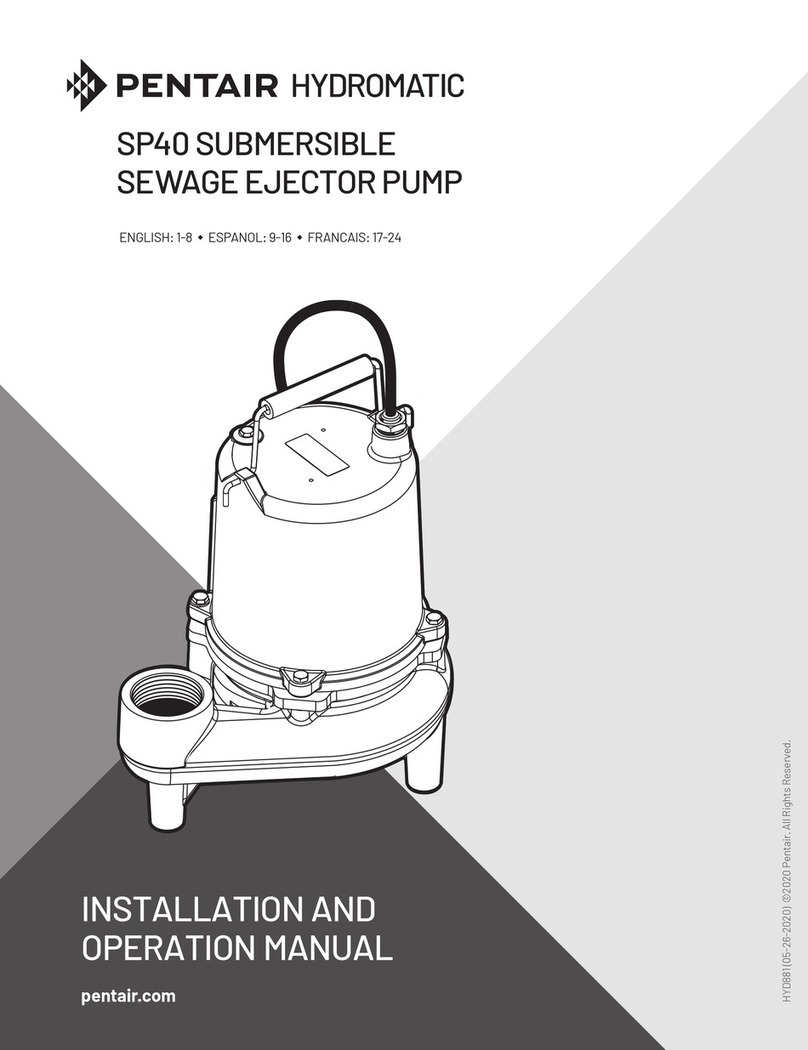
5
APPENDIX A (continued) MODELS 770-790
Pressure switch (PS-1). When the pressure drops to less than
the trip setting of this pressure switch, it's contacts close. This
signals the PLC that the condition has occurred. The PLC acti-
vates the Low Suction Audible Alarm. The standard audible
device is a solid state (Sonalert) annunciator. The PLC also
activates a Low Suction alarm signal light. The alarm can be
silenced by momentarily operating the Alarm Silence switch
(SW-1) which signals the PLC to de-activate the audible alarm.
The alarm light stays lit until the Low Suction Pressure switch
resets. The alarm circuit resets itself and re-activates on the
next occurrence of low suction pressure.
General: In the AUTO position, motor operation is under the
control of the PLC. The PLC utilizes an internally stored pro-
gram to control the operation (starting and stopping) of the
motor. The PLC responds to the Low Suction Pressure switch
and to System Pressure Switch as a minimum. The PLC pro-
gram also includes various timing functions as outlined below.
Pressure Sensing: The standard unit is pressure controlled by
sensing either the system pressure or by sensing the pressure in
a tank, if supplied. Multiple pump systems (Duplex & Triplex)
may employ equal size pumps or one pump may be smaller than
the others.
Alternation: The standard system employs one smaller pump
and one or more later pumps. If there is more than one larger
pump (Triplex) they are usually equal in size to one another.
The small pump is meant to run continuously. The controller
cycles the larger pump or pumps as needed to maintain system
pressure. Alternation of the pumps in not used in Duplex sys-
tems of this type. The smaller pump which runs continuously is
considered the "Lead" pump and the other pump or pumps are
considered the "Lag" pump or pumps.
When all pumps are of the same size, a duplex controller may
be set up to alternate which of the two, or more) pumps operates
as the Lead pump and which pump or pumps operates as the
Lag pump or pumps.
Minimum Run Timing: The standard unit includes timers to
control the Minimum Running time of the pump or pumps to
prevent short cycling of the pump motor(s). This avoids over-
heating the motors which can occur if they are started too fre-
quently. This allows the motor fan to cool down the motor
windings from the last start before the pump is shut down.
Restart Delay Timing: The Restart delay prevents starting a
pump which is still spinning down from the last running. This
can occur when the demand is less than needed for the pump
but more than what can be supplied by the other pump(s). In
this case, when the pump shuts down, the pressure can drop
rapidly enough to immediately signal the pump to start again. If
the pump is still spinning, this can cause mechanical shock to
the pump and motor and can also cause large spikes (momentar-
ily large transient) currents which can blow fuses or trip circuit
breakers. This occurs when the motor magnetic flux vector
angle is out of phase with the power line phase angle by large
enough difference. The Restart delay lets the motor come to
rest or near rest which also allows the motor magnetic flux to
decay. In this state, the motor can be safely restarted with out
excessive transients and mechanical shock.
Alternation Times: Note: The Alternation Times apply only to
controllers for two or more motors (Duplex & Triplex). The
Alternation Time is the clock time that must elapse before the
PLC changes the pump from being a Leading pump into a
Lagging pump. The Alternation Times are independent of the
motor actual running time.
Alternator Overlap Time: When one or more pumps are not
running, alternating the pumps can cause a momentary pressure
drop when the running pump spins down before the other pump
comes up to full speed. The overlap timer is an over run timer
that causes a delay before the pump is shut down. This allows
the second pump to come up to full speed while the first pump
continues to run. After a typical setting of a few seconds, the
controller shuts down the first pump if it is not needed for the
system demand.
CONTROLLER SET-UP AND ADJUSTMENTS
Preliminary Steps: Before attempting to adjust the pressure
switch in pressure controlled systems, adjust the pump pressure
regulating valves for the desired system pressure(s). Remove
the covers from the pressure switch(s). A system pressure
gauge is required for setting the System Pressure Switch.
Timer (TIM) Settings: Note: Changing the timers requires one
of three procedures. 1) The times are set at the factory using a
lap-top computer with the appropriate program and communica-
tions cable, or 2) an optional memory chip can be programmed
at the factory for the new times and added to the PLC in ques-
tion, or 3) an HMI display and setting module can be installed
onto the PLC for the purpose of changing the timer settings.
Contact the factory for details on how this module is used. All
timer settings are in seconds. The standard timers are factory
set at the following settings:
T0 + T9 = Alternation Time on Pump # 2 = 24hr.
(Note: T0(65535sec) + T9(20865sec) = 86400 seconds = 24 Hours)
T1 + T10 = Alternation Time on Pump # 1 = 24hr.
(Note: T1(65535sec) + T10(20865sec) = 86400 seconds = 24 Hours)
T3 = System Pressure Start Delay = 2 Seconds.
(Motor Restart Delay)
T4 = Pump # 1 Alternation Overlap Time = 5 Seconds.
(Pump Over-run Timer)
T5 = System Pressure Minimum Run Time = 4 Minutes.
T6 = Pump # 2 Alternation Overlap Time = 5 Seconds.
(Pump Over-run Timer)
Low Pressure (Cut-Off) Pressure Switch: Set the pressure
switch to the desired cut-off pressure as indicated on the indica-
tor dial. One example of a setting for a booster pump drawing
suction from a municipal main would be 20 to 30 psi for the trip
point of this switch.
Pressure Switch Set-up: To set the System Pressure switch (PS-
2) remove its cover. Start the (lead) pump manually ("MAN"
position) and modulate the system flow until the pressure drops
just below the desired set point. Adjust the pressure switch On
(Start) adjustment until the Input I-0 LED on the PLC lights.
Set the pressure switch Off (Stop) setting as close as practical to
the On setting. Typical settings on a 100 PSI nominal system
would be trip (start) at 98 psi and reset at 102 psi. Verify the
settings by modulating the system flow and observe when the
PLC Input I-0 LED actuates and extinguishes.
Warning: Shock Hazard
Some settings require observing or adjusting PLC settings
and LED indicators. Use Caution to avoid contact with any
electrical terminals, fuses, or connections to avoid electrical
shock.







